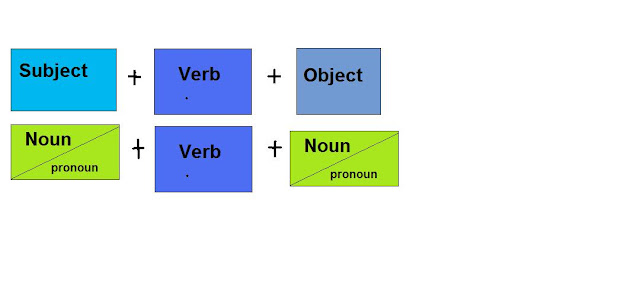Learning a Language the Easy Way (Functional Method of Language Learning Using Colour Cards) - I
Applied and Activity Based Learning
We use a language not only to understand and express our thoughts, and emotions but also as a formal and informal means of communication in our everyday life.
In the Functional Method of language learning, we use the learner's knowledge of fundamental concepts of a sentence and sentence structure in learning how to express oneself in a new language.
We can use colour cards in the functional method of learning a language viz. English Language:
SINGULAR ~ ONE
PLURAL ~ MANY
First Person Singular "I"
First Person Plural "We"
We can learn the language in a very simple way by using Color Cards that will represent the important parts of a sentence and help us in understanding the relevance of each part in forming the sentence:
E.g. Girl makes tea. Girl = Subject, makes = Verb, tea = Object.In the Functional Method of language learning, we use the learner's knowledge of fundamental concepts of a sentence and sentence structure in learning how to express oneself in a new language.
We can use colour cards in the functional method of learning a language viz. English Language:
SINGULAR ~ ONE
PLURAL ~ MANY
First Person Singular "I"
First Person Plural "We"
We can learn the language in a very simple way by using Color Cards that will represent the important parts of a sentence and help us in understanding the relevance of each part in forming the sentence:
"Subject "is a person or thing that does the action denoted by Verb.
So the Subject can be a noun (name of a person or any living thing, place or non-living thing.)
E.g Girl = Noun and makes = Verb.
"Object" is the result of the action (Verb) of Subject
So, Object often Noun (name of a person or any living thing, place or non-living thing.)
E.g. The result of Girl's action of making is "Tea" = Noun.
Note:
A pronoun is a word that represents a noun.
Person
|
Noun
|
Pronoun
|
First (One:-Singular)
|
I
|
I
|
First (Many:-Plural)
|
We
|
We
|
Second (One:-Singular)
|
You
|
You
|
Second (Many:-Plural)
|
You
|
You
|
Third (one:-Singular)
|
Boy
|
He
|
Third (Many:-Plural)
|
Boys
|
They
|
Third (One:-Singular)
|
Girl
|
They
|
Third (Many:-Plural)
|
Girls
|
They
|
Activity:
Display the following sentences and ask the learner to display appropriate colour card to identify the Subject (Noun/Pronoun), Verb and Object components of the following sentences:
- Navin learns French.
- A baby drinks milk.
- Students do homework.
- We have dinner,
- You know him.
I was revisiting a blog post I had written in 2010 and decided to re-post it hoping that you, who has patiently read it will certainly find it interesting as well as useful.




Comments
Post a Comment